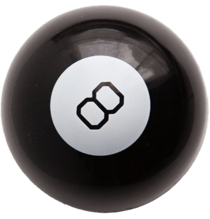
7 Ways To Scale Your Demand Generation Content Marketing Activities In 2022
One thing we learned in 2021 is that content remains critical to any demand generation or inbound marketing effort. The more you publish, the more leads you generate. The more leads you generate, the more sales opportunities, new customers and, of course, revenue.
But what we also learned is that you need to create content at scale, and that remains elusive for many businesses running demand generation strategies.
To complicate this effort even more, content needs to be more personal, more one-to-one as opposed to one-to-many and highly tailored to your prospects’ specific challenges.
To summarize, the amount of highly personalized content is going to explode in 2022, and if you’re not working with a content marketing strategy that scales, it will be difficult to keep up.
If you can’t create enough personalized and issue-appropriate content, you’ll probably miss your key performance metrics in 2022, and then your CEO will be wondering what’s wrong with revenue.
But the good news is there are ways to scale your demand generation content marketing efforts going into the new year.
Here are seven strategies you should be working on now to get 2022 off to a bang.
1) Use A Content Marketing Framework
When people want to be more efficient, they try to get more organized. They buy containers for their pantries, closet organizers for their clothes and folders for all their personal paperwork.
If you do this well, you can quickly find ingredients, that t-shirt you love and your tax forms from last year. Getting organized around content works in a similar way.
Left alone, many of us can quickly find our content marketing efforts very unorganized, all over the place, not focused and definitely not efficient.
A content marketing framework can help.
This approach to content marketing planning helps you look at your prospects’ buyer journeys. It helps you replicate the journey for all your different personas. It helps you organize, sequence and identify the questions prospects ask at each stage of their buyer journeys.
It helps you map your current content assets to those journeys. It helps you identify gaps in your current content offerings. It helps you prioritize the content you need to create, and it will help you personalize that content during development.
One other way a content marketing framework should help you is to take your high-level company story or message and break it down into individual but related campaign stories or messages. Those then get personalized by segment, which will improve overall performance across campaigns and across the company.
2) Answer Questions Across Channels
Good content really comes down to one thing: Is it what your prospects want and need? You want them to engage with your content, so if it’s not getting them to engage, it must be missing the mark.
Assuming you know what questions they have and you’re answering those questions with your content, you should be leveraging the content across multiple channels.
I know this is a big assumption, but this article isn’t about whether you know what content to create. We’ll save that for another day.
If you are creating the right content, you should be able to leverage it on paid search, on paid social, for organic social, for organic search, in email marketing campaigns, on your website to drive conversions, in your account-based marketing (ABM) campaigns and in your influencer marketing, too.
It probably won’t be a perfect fit from channel to channel, but you should only have to make minor adjustments to make it work as long as the targeting criteria is similar.
3) Create Single Campaigns With Segmented Personalization
If you’re looking for a lift in performance across marketing, you probably need to ramp up the amount of personalization across all your marketing tactics and channels.
While this takes longer, requires more effort and makes execution more complicated, people are voting with their clicks:
- 72% of customers will only engage with personalized messaging
- 42% of customers report being frustrated when their content is not personalized
- 80% of consumers are more likely to buy from a company that provides a personalized experience
This data means marketers need to create more tailored and personalized campaigns. To do this, you might have to create more narrow campaigns focused on an industry, a specific role or a very specific challenge.
The narrower the campaign, the more personalized the content and the better the performance.
Again, this might not require a complete redo for your second or third campaign. If you do your segmentation correctly, it only require small adjustments.
Here’s an example: We’re planning a campaign targeting CEOs who were recently funded and managing partners at private equity (PE) firms.
While the audiences are different, the story and message share some common elements. Getting results quickly appeals to both audiences, and that’s by design.
If you design and sequence your campaigns correctly, you can see similar efficiencies in the campaign development efforts.
4) Scale Quickly With Video
Over the past six months or so, we’ve been talking a lot about video. While video is perfectly aligned with how most people want to consume content today, it’s also one of the most scalable methods for creating content.
A single one-hour video session can produce enough content for a month or more. You can cut it up into 60-second clips for posting on social. You can turn that hour into multiple videos for YouTube and publish those same clips as a podcast on all the most popular podcast platforms.
You can post those videos on your website, use them to reinforce messaging on landing pages and build out a pillar page for targeted keywords. The applications for video are almost endless.
That single hour produces assets for the website, landing pages, email campaigns, social media marketing, podcast content and videocast content. Yes, some post-production work needs to be done, but video is much more scalable than printed copy.
Video should be a core part of any content marketing strategy, and it should be front and center in any demand generation strategy. Video can be leveraged in your social media paid ad campaigns as well as to drive up conversion and engagement stats on your paid search campaign.
This increased engagement helps signal to Google that you have highly engaging content. That could actually lower your cost per click and improve the efficiency of your campaigns while helping your pages rank higher organically on Google.
5) Test In Small Batches
This might seem a little counterintuitive. The point of the article is scaling, and here I am talking about small batch testing. However, this is the case where going slow actually helps you go faster down the road.
Testing content and demand generation campaigns in small batches is quick and easy. This means you can run a few tests simultaneously, generate insights and then use them to launch larger, more substantial and more complex campaigns.
When it comes to testing, you can swap out a wide variety of variables, like testing different titles on the same piece of content or testing different images for the same content offer.
For example, we’ve found ads and landing pages perform better when using 3D images (like the one shown above) of the content you’re offering. You can test landing pages with and without testimonials, test different ad copy and A/B test different landing pages altogether.
By running these small and focused tests, you can in weeks identify the best set of ad assets and then launch your more comprehensive campaign with the best assets and drive your best performance.
6) Reuse Assets That Convert On Paid Channels
Since we’re talking about scaling content in the context of demand generation campaigns, we should be looking at reusing as much existing content as possible.
If you’re running paid campaigns on LinkedIn, Facebook and/or Google, and these campaigns are producing solid results, consider taking those campaign assets and featuring them more prominently on your website or in lead nurture campaigns.
Even if you have to tweak the title or make some modest adjustments to the copy, it’s easier to do this than to create entirely new and untested assets to drive more leads.
Looking for places to reuse content, even if it’s modified slightly, is a go-to move for scaling your content marketing efforts.
7) Rethink Your Resources Section
You won’t be shocked to hear that the resources section on your website is where content goes to die. We’ve looked at resources sections for over 100 websites over the past year, and they are almost always in the bottom half of pages visited.
That’s because almost everyone’s resources sections are designed by marketers for marketers and not for your clients or prospects.
Marketers love putting content in the resources section because it’s easy to manage, it’s easy to store and, in some cases, it looks like everything would be easy to find.
But that’s not how people want to get information today.
Since we’re talking about ideas to scale content marketing and demand generation, consider shifting to a Netflix/Hulu/Disney+ model, where you put all your video and audio content into a page that looks exactly like a streaming service.
We’re going to be releasing Square 2+ soon, and we’ll show you exactly how to replace the resources section of your website with a better self-service, notification-based and no-cost subscription model. It helps your clients and prospects access the information they want quickly and efficiently (in a fun way, too).
As soon as we’re ready to show you, you’ll all be the first to see the new Square 2+ section of our website, and we’ll be ready to build these for any clients or prospects that want to upgrade their own content portals.
Stay tuned!

CEO and Chief Revenue Scientist
Mike Lieberman, CEO and Chief Revenue Scientist
Eliminate Hit-or-Miss Marketing Moves
Get advice, tips, tools and guidance to generate more leads for your company in this weekly email newsletter.



Eliminate Hit-or-Miss Marketing Moves
Get advice, tips, tools and guidance to generate more leads for your company in this weekly email newsletter.
















